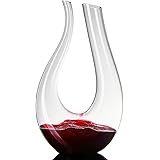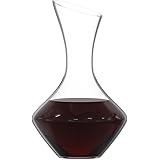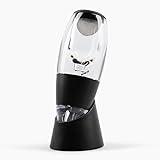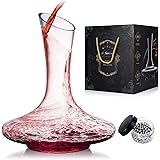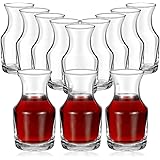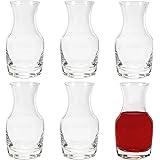Discover the Perfect Harmony: Mastering Wine and Cheese Pairings
In the culinary world, few duos are celebrated with as much enthusiasm as wine and cheese. It’s a pairing so beloved that over 70% of people consider them inseparable when thinking about gourmet experiences. As the video above beautifully illustrates, the magic lies in how each element enhances the other, creating a symphony of flavors that truly delights the palate. But how do you navigate the vast and delicious landscape of options to find your ideal match?
The Synergistic Dance of Wine and Cheese Pairings
The secret to successful wine and cheese combinations, as highlighted, comes down to fundamental chemistry and sensory balance. Wine’s inherent acidity acts as a natural counterpoint to the richness and fat in cheese. Imagine if you ate a rich, creamy cheese without a palate cleanser; each bite might start to feel heavy. The wine’s acidity cuts through this richness, refreshing your mouth and preparing it for the next delectable bite.
Furthermore, wine offers tannins, particularly in red wines, which can interact with the proteins in cheese. This interaction helps to soften the wine’s sometimes aggressive grip, making both the wine and the cheese taste smoother and more harmonious. It’s a delicate balance where the wine elevates the cheese, and the cheese, in turn, can mellow and reveal new dimensions of the wine.
Unveiling the World of Wine: More Than Just Grapes
The video briefly touches upon the diversity of wine, influenced by grape type, region, and aging. But this barely scratches the surface of what makes each bottle unique. Consider the concept of ‘terroir,’ a French term encompassing the soil, climate, topography, and even traditional winemaking practices of a specific region. Terroir dictates much of a wine’s character, from its minerality to its fruit profile.
For example, a Sauvignon Blanc from the Loire Valley in France might exhibit crisp, grassy notes due to its cooler climate and specific soil composition. In contrast, a Sauvignon Blanc from New Zealand could be intensely fruity with tropical undertones, reflecting its distinct growing conditions. Likewise, the aging process, whether in stainless steel, oak barrels, or bottles, significantly shapes the wine’s complexity, adding layers of vanilla, spice, or earthy characteristics. Knowing these nuances helps tremendously in making informed pairing decisions.
Exploring the Rich Tapestry of Cheese Flavors and Textures
Just like wine, cheese boasts an incredible range of flavors, textures, and aromas. Its diversity stems from the type of milk used (cow, goat, sheep), the cultures and enzymes added, and the aging process. You can find everything from fresh, tangy goat cheeses to crumbly, salty blues, and firm, nutty aged cheddars.
The texture of cheese is also a vital consideration. A soft, gooey Brie will interact very differently with a wine than a hard, crystalline Parmesan. Imagine if you paired a delicate, light-bodied wine with a super-pungent blue cheese; the cheese would likely overwhelm the wine entirely. Understanding these characteristics allows you to seek out complementary rather than conflicting profiles.
Essential Principles for Mastering Wine and Cheese Combinations
Successfully pairing wine and cheese doesn’t have to be intimidating. By following a few key principles, you can confidently explore countless delicious combinations:
- Match Intensity: A robust, full-bodied red wine like a Cabernet Sauvignon generally pairs best with an equally intense, aged cheese such as sharp cheddar or Parmesan. Conversely, a light-bodied, crisp white wine like Pinot Grigio will shine alongside delicate, fresh cheeses like chèvre.
- Balance Acidity: Wines with high acidity, such as Sauvignon Blanc or a dry Riesling, are excellent partners for rich, creamy cheeses. The wine’s acidity acts as a palate cleanser, cutting through the fat and refreshing your mouth.
- Consider Saltiness: Salty cheeses, particularly blue cheeses, find a perfect companion in sweet wines like Port or Sauternes. The sweetness balances the saltiness, creating an incredibly satisfying contrast.
- Contrast or Complement: You can either look for flavors that mirror each other (e.g., nutty wine with nutty cheese) or those that create an intriguing contrast (e.g., sweet wine with salty cheese). Both approaches can lead to delightful discoveries.
- Regional Pairings: Often, wines and cheeses from the same region have evolved together to be natural partners. Think of a Sancerre (Loire Valley wine) with a Crottin de Chavignol (Loire Valley goat cheese) – a classic for a reason!
Classic Wine and Cheese Pairings to Elevate Your Palate
While the possibilities are endless, starting with some universally loved combinations can be a fantastic way to begin your pairing journey. Here are a few reliable suggestions:
- Goat Cheese (Chèvre) & Sauvignon Blanc: The bright acidity and sometimes grassy, citrus notes of Sauvignon Blanc perfectly complement the tangy, fresh flavor of goat cheese. It’s a crisp, refreshing combination.
- Brie or Camembert & Pinot Noir: These soft, bloomy rind cheeses love the earthy, fruity, and relatively low-tannin profile of a Pinot Noir. The wine’s elegance doesn’t overpower the cheese’s delicate creaminess.
- Aged Cheddar & Cabernet Sauvignon: For a more robust experience, pair a sharp, nutty aged cheddar with a full-bodied Cabernet Sauvignon. The cheese’s richness can stand up to the wine’s tannins and bold dark fruit flavors.
- Parmesan (Parmigiano-Reggiano) & Sangiovese (Chianti): The savory, umami-rich flavors of Parmesan are a dream with the robust, often cherry-noted acidity of a Sangiovese. This Italian classic is incredibly satisfying.
- Blue Cheese (Gorgonzola, Roquefort) & Port or Sauternes: This is a classic for a reason. The intense saltiness and pungent flavors of blue cheese meet their match in the luscious sweetness of a fortified wine like Port or a noble rot dessert wine like Sauternes.
- Gruyère & Chardonnay (unoaked or lightly oaked): The nutty, slightly sweet character of Gruyère pairs wonderfully with a balanced Chardonnay. If the Chardonnay is unoaked, it offers crisp apple notes; with light oak, it can bring a creamy, vanilla harmony.
Beyond the Basics: Elevating Your Wine and Cheese Experience
Beyond selecting the right wine and cheese, a few practical considerations can enhance your enjoyment. Always serve cheese at room temperature; this allows its full flavor and aroma to develop. The same goes for red wines, which often reveal more complexity when not overly chilled. White wines, however, benefit from being served cooler, but avoid freezing them.
Also, consider the accompaniments. Crusty bread, crackers, fresh fruit (like apples or grapes), nuts, and a drizzle of honey or fig jam can provide additional textures and flavors, making your wine and cheese spread even more delightful. Ultimately, the joy of wine and cheese pairings lies in exploration and personal preference. There are no absolute hard-and-fast rules, only delicious guidelines to inspire your next gastronomic adventure. We hope this guide helps you find incredible wine and cheese pairings.


